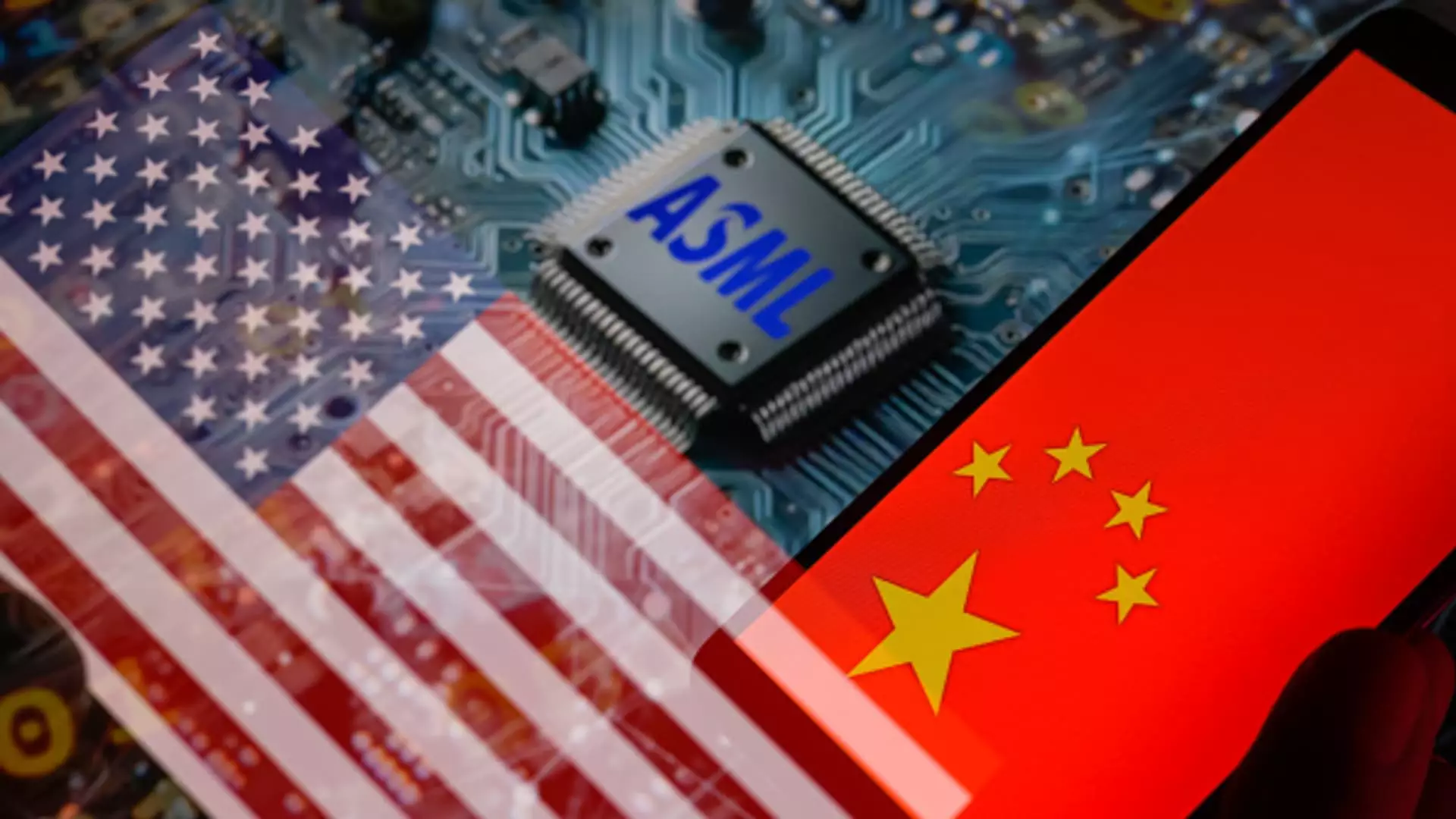ASML, the Netherlands-based leader in chip manufacturing equipment, recently provided insights regarding the ramifications of U.S. export restrictions on its operations in China. The company disclosed in its earnings report on Tuesday that it anticipates its net sales in 2025 will hit between 30 billion euros and 35 billion euros (approximately $32.7 billion to $38.1 billion). This projection notably resides in the lower segment of the prior guidance, indicating a potential decline in demand that could reshape the landscape of the global semiconductor industry.
Despite generating net sales of 7.5 billion euros for the third quarter—surpassing market expectations—ASML’s forecast for new bookings came in significantly lower than anticipated. The company reported net bookings of 2.6 billion euros ($2.83 billion), starkly contrasting with the consensus estimate of 5.6 billion euros. The rapid decline in ASML’s stock price—plummeting as much as 16% and resulting in a staggering loss of over $50 billion in market capitalization—reflects the market’s reaction to these disappointing figures and heightened uncertainties ahead.
Several analysts point to geopolitical tensions and restrictions as primary causes for ASML’s declining forecasts. For instance, Roger Dassen, ASML’s Chief Financial Officer, suggested the company’s partnership with clients in China would “normalize,” indicating that the preceding demand levels might not be sustainable. UBS analysts have also highlighted how delays in advancements from major clients, such as Intel and Samsung, have begun to ripple throughout ASML’s prospects.
The anticipated 25% to 30% dip in Chinese revenues signals a critical reduction from previous expectations, showing that geopolitical constraints are actively reshaping ASML’s strategic path. The root of this disruption can be traced back to the stockpiling behaviors of ASML’s Chinese customers, who have rapidly acquired older DUV machines to circumvent U.S. export restrictions. This purchasing frenzy underscores a desperate attempt by Chinese firms to retain access to essential chip manufacturing technology.
China has been a crucial market for ASML, accounting for 29% of the company’s revenues last year. However, projections now suggest that this figure could drop to approximately 20% by 2025. As customers rapidly acquired older generation DUV machines leading up to export restrictions, the growth of sales from China surged dramatically in the earlier quarters of 2024, momentarily masking the impending decline.
Interestingly, these export restrictions may have inadvertently benefited ASML in the short term, with rapid purchases of legacy DUV machines from Chinese firms. This paradox underlines the complexities of the semiconductor industry, where the ramifications of geopolitical tensions have paradoxically led to a temporary spike in demand for older technology.
ASML’s foresight into the diminishing role of China in their revenue streams signifies a strategic pivot for the firm. In light of the expected drop-off, it will need to rethink its approach to other markets and possibly explore alternative opportunities to bolster its overall growth. Analysts have advised that the firm, akin to Intel, finds itself in a precarious position given its reliance on the Chinese market.
The potential disconnect in ASML’s revenue strategy also opens the door for competitive firms to take advantage of the situation. If the trend continues, ASML could see revenues not only declining from China but potentially from other marketplaces as well, influenced by the overarching constraints imposed by the U.S. on advanced technology exports.
Moreover, as concerns over supply chain disruptions grow in light of geopolitical instability, ASML may need to adapt its global strategy to mitigate the risks associated with over-reliance on any single market.
ASML is currently navigating a challenging landscape marked by significant geopolitical constraints. The company’s anticipated revenue decline, particularly from China, signals an urgent need for reassessment within both its operational framework and broader strategic vision. As geopolitical tensions continue to influence global trade dynamics, the implications extend beyond ASML, potentially reshaping the entire semiconductor manufacturing ecosystem and prompting stakeholders to rethink their engagement in the markets affected by these restrictions. The future for ASML will depend not just on overcoming these hurdles, but also on re-aligning its strategies to ensure long-term sustainability amidst a rapidly evolving global landscape.

